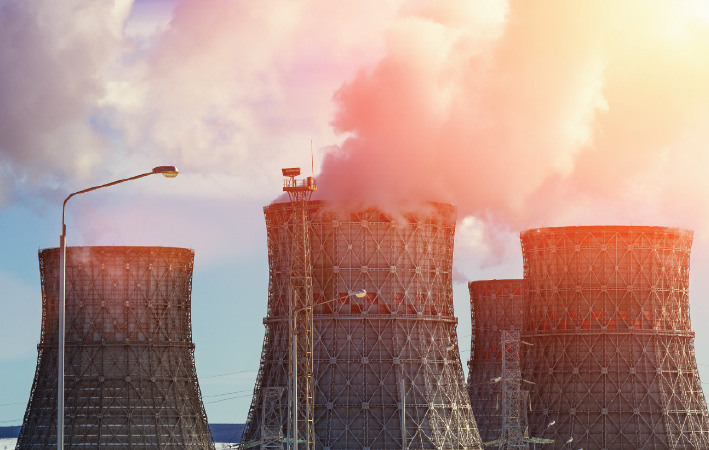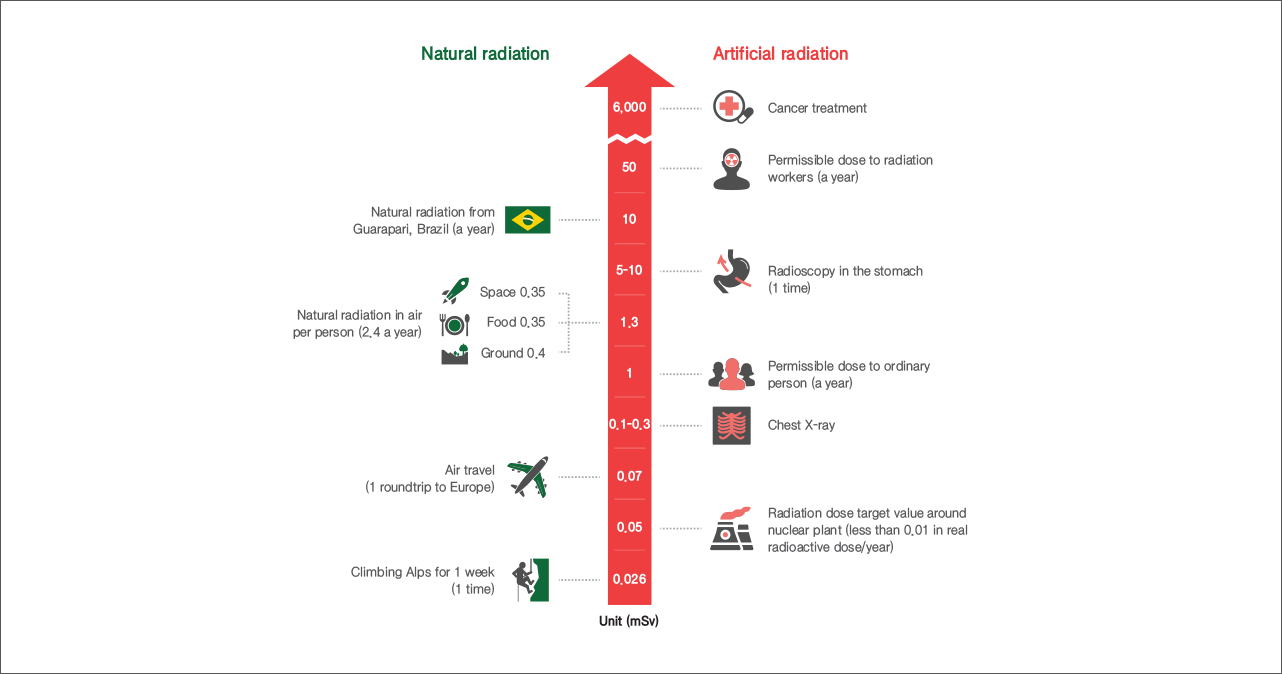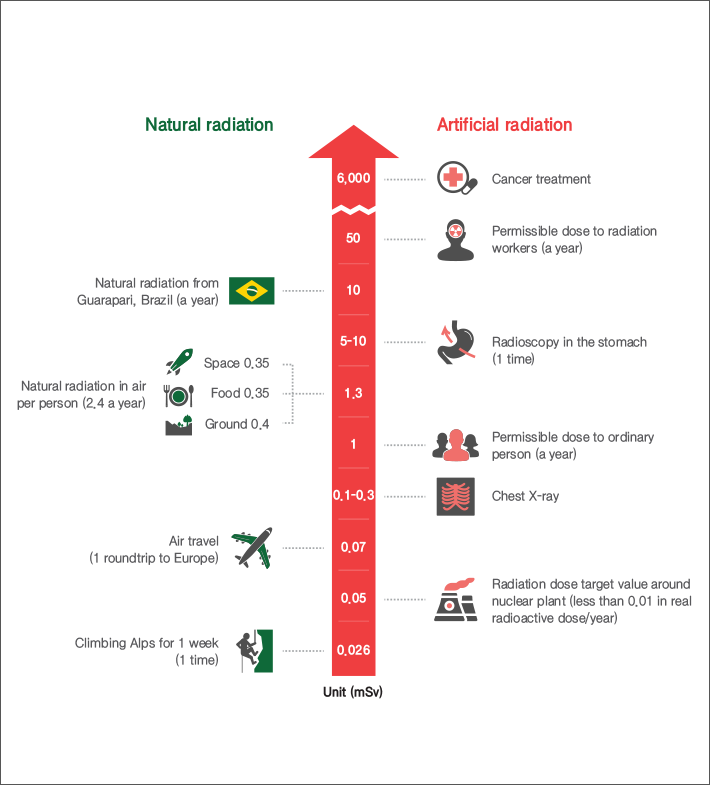Every material Earth is composed of atoms, and electrons rotating around a nucleus made up of protons and neutrons. Some atoms are stable while others are unstable.
To reach a stable state, it removes its own protons, neutrons, and electrons by itself, a process called radioactive decay.
In other words, radioactive decay can be defined as the spontaneous radiation emission of unstable atoms. The ray produced by radioactive decay is called radiation. Radiation includes
alpha-, beta-, gamma-, neutron- and X-ray used for patient diagnosis.


Characteristics of radiation


Danger of Radiation
When the human body is exposed to radiation, it can damage DNA (e.g.cancer, infertility, birth defects) through physical and chemical reactions.
Depending on the degree of damage, the effect on the human health may vary.


Effect on the human according to radiation dose
| Radiation dose(mSv) | Body symptoms |
|---|---|
| 100 | Causes serious cancer to the body |
| More than 150 | Temporary infertility |
| More than 250 | Fetal deformities (14-18 days after pregnancy) |
| More than 500 | Leukopenia |
| More than 1,500 | Radiation sickness |
| More than 4,000 | 50% die from disorder of hematopoietic system within 30 days |
| More than 5,000 | Hair Loss |
| More than 7,000 | 100% die within 2~3 weeks |
Company: JS TECHWIN
Address: 79-4, Cheombok-ro, Dong-gu, Daegu, Republic of Korea
Tel: +82-(0)70-8237-4596 / Fax: +82-(0)53-955-4596
Business Number: 504-81-94523 /
Mail-order-sales approval number: Dong-gu, Daegu No. 0443
